#phenylalanine
Note
Phenylalanine vaguely reminds me of aunt fanny from the movie robots
Okay but why are you right?
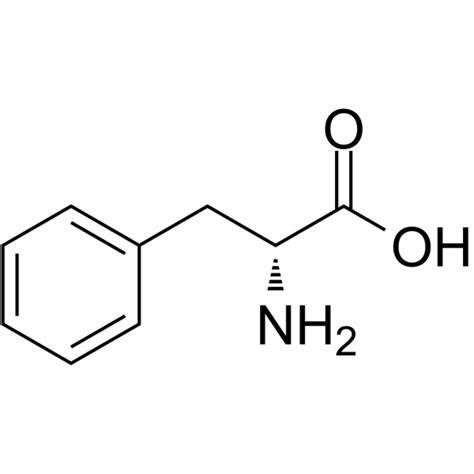

130 notes
·
View notes
Text
Reading my old Venom & Phenylalanine script and I am laughing
The value of human life cannot be calculated, it’s simply unethical and quite frankly impossible to accurately put a price on someone’s head. And yet that’s exactly what I’m going to do. But not for the reasons that you might think. See I’m not talking about the price that Eddie Brock would have to pay someone in order to get consensually eaten by Venom. I know some of you kinky little bastards would do that for free… I know what lurks on the internet.
No.
I’m talking about the price Eddie Brock has to pay in order to prevent that from happening.
So let’s find out shall we.

47 notes
·
View notes
Text

Almost forgot I had these. Gonna nosh a smidgen. Cheer myself up, gonna switch from kvetching to kneeling.
3 notes
·
View notes
Text
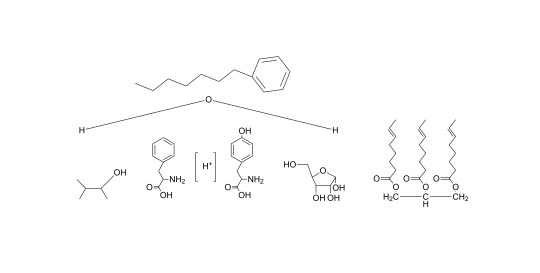
May I present to you: The Chemistry Nativity Scene
#organic chemistry#chemistry memes#chemistry#organic chemistry memes#heptylbenzene#Tyrosine#Ribose#triglycerides#3-methylbutan-2-ol#Phenylalanine
3 notes
·
View notes
Text
Table 24.2 gives pKa values for each ionisable group of the 20 protein-derived amino acids. (...) The isoelectric points for common amino acids are given in table 24.2.

"Chemistry" 2e - Blackman, A., Bottle, S., Schmid, S., Mocerino, M., Wille, U.
#book quotes#chemistry#nonfiction#textbook#ionization#amino acid#alanine#arginine#asparagine#aspartic acid#cysteine#glutamic acid#glutamine#glycine#histidine#isoleucine#leucine#lysine#methionine#phenylalanine#proline#serine#threonine#tryptophan#tyrosine#valine#isoelectric
0 notes
Text
Phenylalanine Market Size, Growth, Analysis | Forecast 2021-2028 (reportsanddata.com)
Phenylalanine Market, By Type (L-phenylalanine, D-Phenylalanine, DL-phenylalanine), By Application (Depression, Chronic Pain, Vitiligo), By Distribution Channel (Hospital Pharmacy, Retail Pharmacy, Online Pharmacy, Others) and By Region Forecast to 2028
0 notes
Text
Phenylalanine and Its Role in Neurotransmitter Production and Mood Regulation

Have you ever wondered how your mood is influenced by the food you eat?
Well, the answer may lie in an essential amino acid called phenylalanine. This remarkable nutrient plays a crucial role in neurotransmitter production and mood regulation, making it a key factor in maintaining a healthy emotional state and overall well-being. By delving into the fascinating world of phenylalanine, we can uncover how it impacts our mood and explore ways to harness its potential for a happier and more balanced life.

Understanding Phenylalanine
Phenylalanine exists in two forms: L-phenylalanine and D-phenylalanine. These forms are mirror images of each other, with L-phenylalanine being the naturally occurring and biologically active form in our bodies.
Phenylalanine serves as a fundamental building block for the production of various essential molecules in the body. It is involved in the synthesis of proteins, enzymes, and other important compounds necessary for proper bodily functions.
One of the key roles of phenylalanine is its involvement in neurotransmitter synthesis. Neurotransmitters are chemicals that transmit signals between nerve cells in the brain. Phenylalanine plays a crucial role in the production of neurotransmitters like dopamine and norepinephrine.
Dopamine is often referred to as the "feel-good" neurotransmitter, as it is associated with pleasure, reward, motivation, and overall well-being. Phenylalanine is a precursor to dopamine, meaning it is converted into dopamine through a series of biochemical reactions.
Norepinephrine, another neurotransmitter derived from phenylalanine, is involved in maintaining alertness, focus, and a positive mood. It plays a significant role in regulating stress response and promoting a sense of emotional stability.
Understanding the importance of phenylalanine as a building block for essential molecules and its role in neurotransmitter synthesis provides insights into its impact on our overall mood and emotional well-being.
Phenylalanine and Mood Regulation
Phenylalanine plays a significant role in mood regulation and emotional well-being. Its impact on mood stems from its involvement in the synthesis of neurotransmitters, particularly dopamine and norepinephrine.
Dopamine, derived from phenylalanine, has a profound influence on motivation, pleasure, and mood stability. Optimal levels of dopamine are associated with feelings of reward, satisfaction, and a sense of well-being. When phenylalanine levels are inadequate, it can potentially lead to imbalances in dopamine production, which may contribute to mood disorders such as depression and low motivation.
Furthermore, norepinephrine, also synthesized from phenylalanine, helps promote alertness, focus, and a positive mood. Adequate levels of norepinephrine are essential for maintaining cognitive function and a sense of emotional stability. Imbalances in norepinephrine levels have been linked to symptoms of anxiety and difficulties in concentration.
By understanding the relationship between phenylalanine, dopamine, and norepinephrine, we can appreciate how these neurotransmitters impact our mood and emotional well-being. Ensuring an adequate supply of phenylalanine through a balanced diet can help support the production of these neurotransmitters, potentially enhancing motivation, pleasure, mood stability, alertness, and overall positive mood.
Food Sources of Phenylalanine
Incorporating phenylalanine-rich foods into our diet is crucial for ensuring an adequate supply of this essential amino acid. Here are some examples of food sources that are rich in phenylalanine:
- Animal-Based Sources:
- Eggs: Eggs are not only a good source of protein but also contain significant amounts of phenylalanine.
- Fish: Various types of fish, such as salmon, tuna, and cod, are rich in phenylalanine.
- Poultry: Chicken and turkey are excellent sources of phenylalanine.

- Plant-Based Sources:
- Legumes: Beans, lentils, chickpeas, and soybeans are plant-based sources of phenylalanine.
- Seeds: Pumpkin seeds, chia seeds, sesame seeds, and flaxseeds provide phenylalanine.
- Whole Grains: Quinoa, brown rice, oats, and whole wheat products are good sources of phenylalanine.

Incorporating a variety of these foods into our meals and snacks can ensure a balanced intake of phenylalanine. It is essential to consider both animal-based and plant-based sources to accommodate different dietary preferences and needs.
While phenylalanine is naturally present in various foods, it is worth noting that excessive heat or prolonged cooking can cause some degradation of phenylalanine. Therefore, opting for cooking methods that preserve the nutrient content, such as steaming or lightly sautéing, can be beneficial.
Remember, it is always recommended to consult with a healthcare professional or registered dietitian for personalized dietary advice, especially if you have specific dietary restrictions or health conditions.
By incorporating phenylalanine-rich foods into our diet, we can support the body's natural production of neurotransmitters, positively impacting our mood, emotional well-being, and overall health.
Phenylalanine Deficiency and Supplementation
Phenylalanine deficiency can have detrimental effects on mood and cognitive function. Insufficient levels of phenylalanine may lead to imbalances in neurotransmitter production, particularly dopamine and norepinephrine, which can negatively impact mood regulation and cognitive processes.
A deficiency in phenylalanine has been associated with symptoms such as fatigue, low mood, decreased motivation, and difficulties in concentration and memory. These effects highlight the importance of maintaining adequate phenylalanine levels for optimal mental and emotional well-being.
While it may be tempting to consider phenylalanine supplementation, caution is advised, especially without professional guidance. Phenylalanine supplements should only be used under the supervision of a healthcare professional or registered dietitian who can assess individual needs and ensure appropriate dosage. High doses or improper usage of phenylalanine supplements can potentially lead to adverse effects and disrupt the delicate balance of neurotransmitters in the body.
Instead of relying solely on supplementation, obtaining phenylalanine through a well-balanced diet is essential. A varied and nutrient-rich diet that includes phenylalanine-rich foods, as mentioned in Section 3, can provide a natural and balanced intake of this amino acid. This approach ensures that phenylalanine is obtained in conjunction with other essential nutrients and compounds that support its absorption and utilization in the body.
It is important to emphasize that individual dietary needs may vary, and professional guidance should be sought to determine the appropriate intake of phenylalanine based on personal health and lifestyle factors. Working with a healthcare professional or registered dietitian can help tailor dietary recommendations to meet specific needs and ensure overall nutritional balance.
By prioritizing a well-balanced diet and seeking professional guidance when considering phenylalanine supplementation, we can support the body's natural processes and maintain optimal mood, cognitive function, and overall well-being.
Lifestyle Factors for Mood Enhancement
In addition to phenylalanine intake, various lifestyle factors play a crucial role in mood enhancement and overall well-being. By incorporating healthy habits into our daily lives, we can complement the effects of phenylalanine and support optimal mood regulation. Here are some key lifestyle factors to consider:
- Exercise: Regular physical activity has been shown to boost mood and promote the release of endorphins, which are natural mood-enhancing chemicals. Engaging in activities like walking, jogging, dancing, or any form of exercise that you enjoy can help uplift mood and improve overall emotional well-being.
- Sleep: Quality sleep is essential for maintaining a balanced mood. Aim for a consistent sleep schedule and create a sleep-friendly environment by keeping your bedroom dark, quiet, and comfortable. Establishing a relaxing bedtime routine and avoiding electronic devices before bed can also contribute to better sleep quality.
- Stress Management: Chronic stress can negatively impact mood and overall mental health. Incorporating stress management techniques, such as mindfulness meditation, deep breathing exercises, or engaging in hobbies and activities you enjoy, can help reduce stress levels and promote emotional well-being.
Maintaining a healthy lifestyle overall is crucial for optimal mood regulation. In conjunction with phenylalanine intake, it is important to prioritize a well-balanced diet rich in fruits, vegetables, whole grains, lean proteins, and healthy fats. These dietary choices provide essential nutrients and support overall health, including brain function and neurotransmitter production.
To incorporate phenylalanine-rich foods into your meals and snacks, consider the following practical tips:
- Start your day with a protein-rich breakfast that includes eggs, yogurt, or a protein smoothie with added seeds.
- Include legumes, such as beans or lentils, in your soups, salads, or main dishes.
- Snack on nuts and seeds, like almonds or pumpkin seeds, for a healthy and satisfying option.
- Opt for whole grain options, such as quinoa or whole wheat bread, as a base for your meals.
Remember to personalize your dietary choices based on your individual preferences, dietary needs, and any specific recommendations from healthcare professionals or registered dietitians.
By adopting a holistic approach that combines phenylalanine intake with healthy lifestyle habits, we can optimize mood regulation and promote a positive emotional state for overall well-being.
Conclusion
Phenylalanine, an essential amino acid, plays a vital role in neurotransmitter production and mood regulation. Through its involvement in synthesizing dopamine and norepinephrine, phenylalanine influences motivation, pleasure, mood stability, alertness, and focus. Understanding the impact of phenylalanine on our emotional well-being opens up possibilities for improving our mood and overall quality of life.
While phenylalanine can be obtained through supplementation, it is important to prioritize a well-balanced diet that includes phenylalanine-rich foods. Incorporating sources such as eggs, fish, legumes, seeds, and whole grains into our meals and snacks helps maintain adequate levels of phenylalanine and supports the body's natural neurotransmitter production. It is worth noting that self-supplementation without professional guidance can have adverse effects, as high doses or improper usage may disrupt the delicate balance of neurotransmitters.
In addition to phenylalanine intake, lifestyle factors greatly contribute to mood enhancement. Regular exercise, quality sleep, and effective stress management are essential for maintaining optimal mood and emotional well-being. By adopting a holistic approach that combines healthy habits with a balanced diet, we can synergistically support our mood regulation and overall mental health.
It is important to remember that individual dietary needs and health considerations may vary. Seeking professional advice from healthcare professionals or registered dietitians is highly recommended for personalized recommendations on optimizing phenylalanine intake and managing mood-related concerns. These experts can provide tailored guidance based on specific needs and ensure overall nutritional balance.
In conclusion, by understanding the role of phenylalanine, incorporating phenylalanine-rich foods into our diet, and adopting a healthy lifestyle, we can proactively support mood regulation and promote emotional well-being. Let's prioritize our well-being and seek professional advice to make informed choices for a happier and more balanced life.
FAQ
Can phenylalanine supplements be used to improve mood? While phenylalanine is involved in neurotransmitter production and mood regulation, it is important to note that the use of phenylalanine supplements for mood improvement should be done under the guidance of a healthcare professional. Self-supplementation without professional advice can lead to potential risks and adverse effects. It is best to focus on obtaining phenylalanine through a well-balanced diet that includes phenylalanine-rich foods. Are there any risks associated with phenylalanine deficiency? Phenylalanine deficiency can have negative effects on mood and cognitive function. Insufficient levels of phenylalanine may lead to imbalances in dopamine and norepinephrine production, impacting mood stability and cognitive processes. Symptoms of phenylalanine deficiency may include fatigue, low mood, decreased motivation, and difficulties in concentration and memory. Maintaining an adequate intake of phenylalanine through a balanced diet is crucial to support optimal mood and cognitive function. Are there any specific foods that should be avoided if I have phenylketonuria (PKU)? Individuals with phenylketonuria (PKU), a genetic disorder that affects the body's ability to process phenylalanine, need to follow a strict low-phenylalanine diet. Foods high in phenylalanine, such as dairy products, meat, fish, eggs, nuts, and legumes, should be limited or avoided. Instead, individuals with PKU should consume specially formulated low-protein foods and phenylalanine-free medical formulas that provide the necessary nutrients while controlling phenylalanine intake. Can lifestyle factors like exercise and sleep really impact mood? Yes, lifestyle factors like exercise and sleep have a significant impact on mood and emotional well-being. Regular exercise releases endorphins, which are natural mood-boosting chemicals. Engaging in physical activity can help reduce stress, improve mood, and promote overall well-being. Quality sleep is also crucial for maintaining a balanced mood. Consistent sleep patterns and creating a conducive sleep environment contribute to better sleep quality, which positively affects mood regulation. Can phenylalanine-rich foods alone improve mood and emotional well-being? While phenylalanine-rich foods can support the body's natural production of neurotransmitters and contribute to mood regulation, it is important to adopt a holistic approach to enhance mood and emotional well-being. Lifestyle factors like exercise, sleep, stress management, and a balanced diet overall play key roles. Incorporating phenylalanine-rich foods into a well-rounded diet, along with healthy habits, can synergistically support mood enhancement and promote optimal emotional health.
Read the full article
#D-phenylalanine#essentialaminoacid#L-phenylalanine#moodregulation#neurotransmitter#Phenylalanine#phenylalanine-richfoods
0 notes
Text
Monolignols are synthesized in the cell from phenylalanine via the phenylpropanoid pathway.
"Plant Physiology and Development" int'l 6e - Taiz, L., Zeiger, E., Møller, I.M., Murphy, A.
#book quote#plant physiology and development#nonfiction#textbook#monolignol#synthesis#plant cells#phenylalanine#phenylpropanoid
0 notes
Text
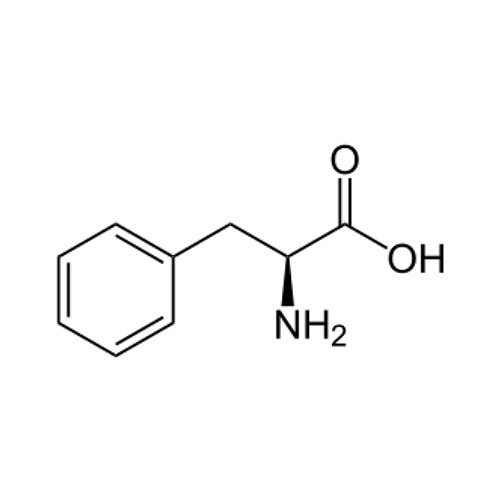
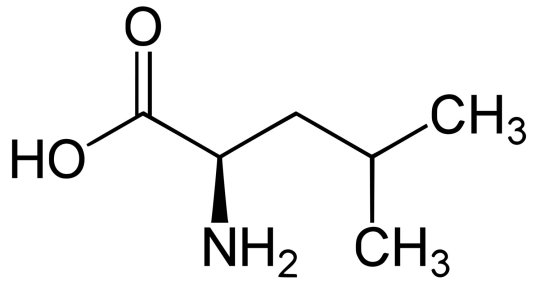
Aminoacid Swag Tournament Round 1
58 notes
·
View notes
Text
It is closely associated with photosynthesis in plants that Phenylalanine is a shikimate pathway metabolite
Phenylalanine is a component of the artificial sweetener aspartame (Equal, NutraSweet), which is added to numerous pharmaceuticals, diet foods, and diet beverages.Most people don't have any health issues with Phenylalanine Market. Phenylalanine can be a major health risk for those who have the genetic ailment phenylketonuria (PKU) or a few other medical problems. In persons with PKU, phenylalanine can lead to intellectual impairments, brain damage, seizures, and other issues. Natural phenylalanine can be found in a variety of protein-rich meals, including milk, eggs, and meat. Supplements containing phenylalanine are also offered for sale.

Read more @ https://digitalgrowinfo.blogspot.com/2022/08/the-high-production-of-phenylalanine-in.html
#Phenylalanine#Phenylalanine Market#Phenylalanine Market Analysis#Pharmaceutical#Coherent Market Insights
0 notes
Note
HERO BEING SEDUCED INTO A VILLAIN
(seduced by the villain ofc) /prompt
“Very good,” the villain praised. “A little deeper.”
There was a crack and the hero gasped, sweating and panting. It felt unreal, it was wrong and it was beyond what they’d expected to be capable of.
“A bit more, sweetheart.” Another crack and then, the hero couldn’t watch anymore. With tears burning in their eyes, they swallowed. Suddenly, they were overwhelmed with emotions. It was too much, too strange. “Perfect.”
The villain’s voice was a purr and their words were like honey. Reassuring, definitely, but sometimes a little too sticky to be good. Their hand around the hero’s was warm and they squeezed gently, thumb drawing little squares into the skin.
“I…” The hero stared at the body.
“You killed them,” the villain whispered. They sounded impressed. “Quite intimately.”
They felt like they had to throw up. The hero looked at the blood and the knife in the supervillain’s chest. The villain’s hand was still around theirs and it still felt weirdly freeing, yet so wrong. But the supervillain had killed with no mercy, right?
“Are you sure they’ve got no pulse?” the hero asked, heart pounding in their chest.
“Pretty much. You stabbed through their lungs and into their heart. Seems deadly to me, love.” The villain kissed the hero’s neck as a reward, catching skin between their teeth to be a little rougher. “You’re being so good.”
“God, this isn’t right. I shouldn’t have killed them,” the hero said but the villain pulled them away gently, hands gliding down to their waist.
“They were a horrible person,” they said as they continued to kiss the hero from behind. “They deserved it.”
“I…” The hero’s head spun.
“Don’t you remember what they did to you?” The villain turned them around easily and went through the hero’s hair with their fingers. “Have you forgotten?”
“No, I just…this feels wrong. They’re—” The hero looked back at the body on the floor, bleeding out. However, the villain caught their jaw and turned their head right back to them.
“Sweetheart.” Their eyes dropped slowly and the hero knew that promised a loving kiss. It felt good to be close to someone after all these months of self-loathing. Somehow, the villain understood and the hero knew they were the only one who ever could.
It was unquestionable loyalty. The hero knew the villain would do anything for them and the hero felt like they had to repay that kindness. Encouragement was like a drug to them.
“You did so well,” the villain whispered and, indeed, they leaned down to press a soft kiss to the hero’s lips. “You’re so perfect.”
Involuntarily, the hero blushed and returned the intimacy, lips against lips, hand in hand, chest against chest. They hesitated at first but the villain’s hands around them steadied them, took their mind off the violent scene. Although they tried their best not to pay too much attention to it, they couldn’t help but notice the blood on the villain’s suit.
Slowly, the villain got bolder though, kissed more passionately, grabbed inappropriate parts of the hero’s body.
“You were doing so well…” they whispered again and the hero couldn’t help but sigh when they had to hold onto the villain so they wouldn’t fall over.
“You think so…?”
“I know so. Killing someone is hard, I understand. But this was a necessity, my love. This had to be done. Your enemies deserve it. They’re horrible people, all of them.”
The villain got a lot lewder as their hands started to find all sorts of ways to get under the hero’s suit.
“I’m so proud of you.”
The hero shuddered, clearly enjoying the praising and with all the touching, they nearly forgot where they were. Nearly.
“Wait…not here…” they gasped and thank god the villain agreed.
It turned them into someone obsessive soon after but the hero truly didn’t miss their humanity once the villain convinced them to kill that too.
#alanin glutamin arginin asparagin threonin tyrosin phenylalanin tryptophan all stuck in my head I can’t stop drawing them noooooo#writing snippet#heroxvillain prompt#heroxvillain snippet#heroes and villains#hero#villain#hero x villain#heroxvillain#an answer for an ask#request#suggestive
253 notes
·
View notes
Text
rewatching venom 2 and I almost forgot about the actual couple's quarrel that sets it all off lmao
#'fena fenil fenila' 'phenylalanine I told you a thousand times' 'yeah I just said that'#god these losers#smybrock#venom#newbie stuff
7 notes
·
View notes
Text
It is found in the amino acids cysteine (Cys) and methionine (Met) (table 24.1, p. 1057) in which the sulfur-containing functional group is a thiol and thioether, respectively.
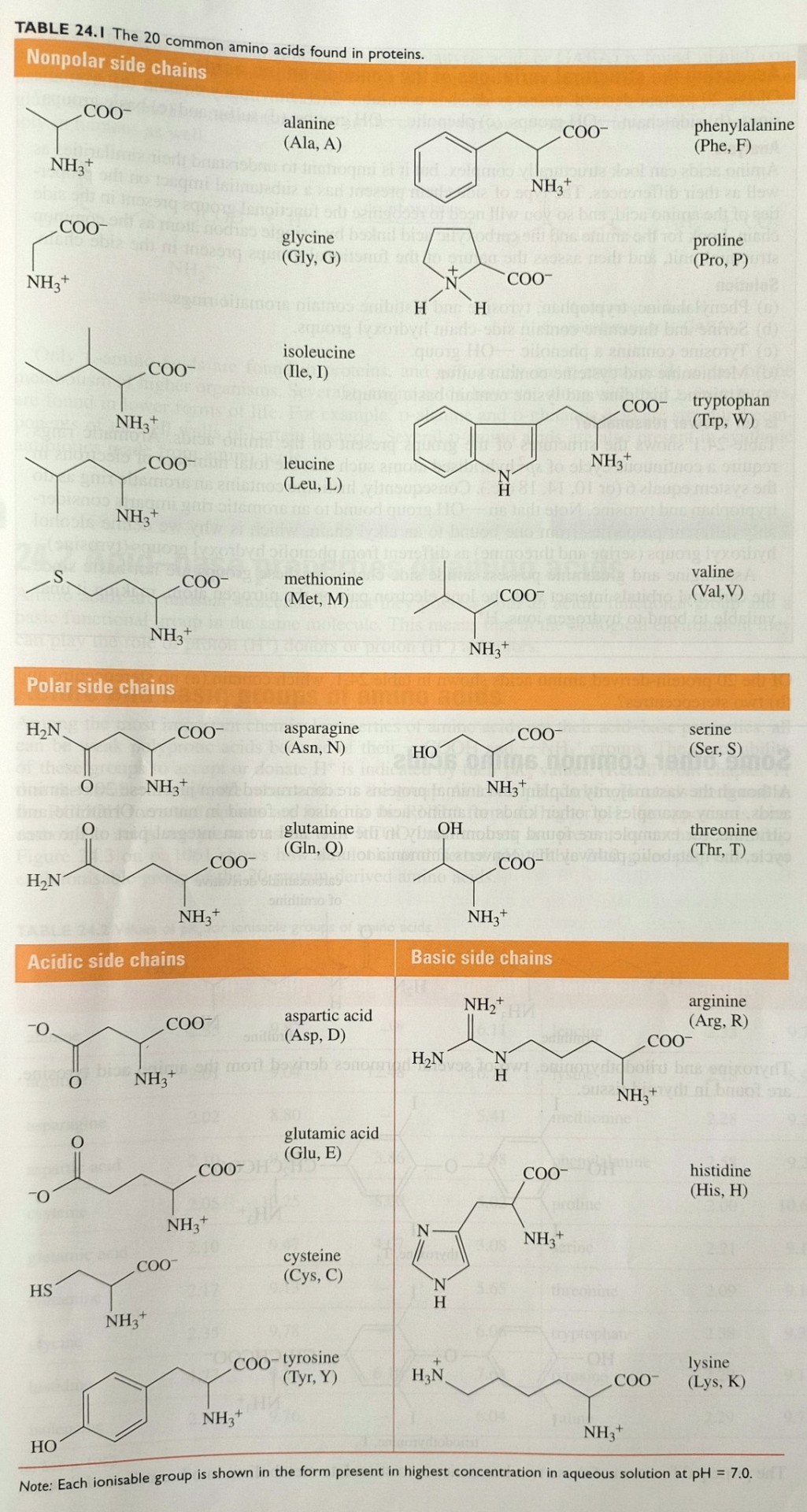
Table 24.1 gives common names, structural formulae and standard three-letter and one-letter abbreviations for the 20 common L-amino acids found in proteins.
"Chemistry" 2e - Blackman, A., Bottle, S., Schmid, S., Mocerino, M., Wille, U.
#book quotes#chemistry#nonfiction#textbook#amino acid#sulfur#thiol#thioether#alanine#glycine#isoleucine#leucine#methionine#phenylalanine#proline#tryptophan#valine#asparagine#glutamine#serine#threonine#aspartic acid#glutamic acid#cysteine#tyrosine#arginine#histidine#lysine
0 notes
Text
Cletus: HELP! I told Frances I'd cook dinner tonight and I can't cook!
Carnage [pouring milk directly into a box of cocoa puffs]: And you thought I could be of assistance?
#not true--he's just panicking#a cannibal cooking VEGAN though will be a challenge#they'll end up getting some of those vegan noodle bowls and everyone is happy#vegan for frances and no DEAD meat in them means Carnage is also happy#and soybeans also have the phenylalanine that symbiotes need#(and if they're still hungry they can always hunt some people later)#venom let there be carnage#incorrect quotes#incorrect venom quotes#cletus kasady#carnage#frances barrison#shriek#shriekingcarnage#venom#headcanons#comedy#tw: food issues#marvel#venom crack
21 notes
·
View notes
Text
9 Essential Amino Acids: Definition, Benefits, and Food Sources

Do you know there are 9 essential amino acids that you need to obtain from the food you consume?
The 9 essential amino acids are:
- Histidine
- Isoleucine
- Leucine
- Lysine
- Methionine
- Phenylalanine
- Threonine
- Tryptophan
- Valine
These 9 essential amino acids are crucial for your body's functioning and cannot be produced internally. In this blog post, we will uncover their importance and the food sources that provide them. By understanding their significance and incorporating them into your diet, you can support overall health and well-being. Join us as we explore these essential nutrients and how they contribute to your body's optimal functioning.
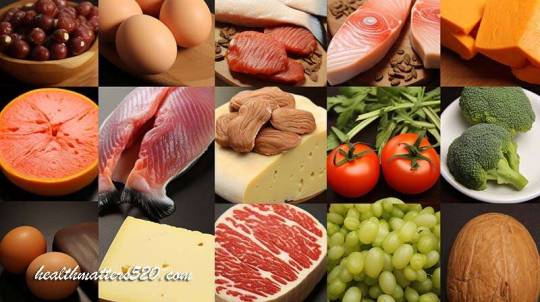
Understanding Amino Acids and Essential Amino Acids
Amino acids are the building blocks of proteins and play a vital role in numerous functions within your body. These small molecules combine to form proteins, which are essential for the structure, function, and regulation of tissues and organs.
There are 20 different amino acids that can be found in proteins. Among these, nine are classified as essential amino acids. Essential amino acids are crucial for your health because your body cannot produce them on its own. Therefore, it is necessary to obtain them from the food you consume.
Each of these essential amino acids plays a unique role in your body, supporting processes such as protein synthesis, tissue repair, and the production of important molecules like hormones and enzymes. By obtaining them from dietary sources, you ensure that your body has an adequate supply of these essential nutrients.
9 Essential Amino Acids
Histidine
Histidine is an essential amino acid that your body requires for optimal growth, tissue repair, and the production of histamine. Histamine is a compound involved in various physiological processes, including immune responses and digestion.
Histidine plays a vital role in promoting healthy growth and development, particularly during childhood and adolescence. It is involved in the synthesis of proteins that support tissue repair and maintenance. Additionally, histidine is necessary for the production of myelin, a protective substance that surrounds nerve cells and facilitates proper nerve impulse transmission.
One of the significant functions of histidine is its involvement in the production of histamine. Histamine acts as a chemical messenger in your body and is responsible for regulating immune responses, inflammatory reactions, and allergic responses. It plays a crucial role in triggering the body's defense mechanisms against harmful substances or pathogens.
Food sources rich in histidine:
- Meat (beef, poultry, pork)
- Fish (salmon, tuna, cod)
- Dairy products (milk, cheese, yogurt)
- Grains (wheat, rice, oats)

Incorporating histidine-rich foods into your diet ensures that your body receives an adequate supply of this essential amino acid. By doing so, you support optimal growth, tissue repair, and the proper functioning of your immune system and digestive processes.
Isoleucine
Isoleucine is an essential amino acid that plays a crucial role in energy production, muscle metabolism, and the regulation of blood sugar levels.
Energy Production: Isoleucine is involved in the process of converting nutrients into usable energy within your body. It plays a key role in the function of mitochondria, which are the powerhouses of your cells responsible for generating energy.
Muscle Metabolism: Isoleucine is particularly important for muscle growth, repair, and recovery. It helps stimulate protein synthesis, which is essential for building and maintaining lean muscle mass. Isoleucine also aids in the regulation of muscle metabolism, ensuring efficient use of nutrients for muscle function.
Regulation of Blood Sugar Levels: Isoleucine plays a role in regulating blood sugar levels by assisting in the uptake and utilization of glucose by cells. It is involved in insulin signaling, helping to enhance insulin sensitivity and maintain balanced blood sugar levels.
Food sources rich in isoleucine:
- Meat (beef, chicken, pork)
- Fish (salmon, tuna)
- Eggs
- Dairy products (milk, cheese, yogurt)
- Legumes (beans, lentils)
- Seeds (pumpkin seeds, sunflower seeds)

Including these isoleucine-rich foods in your diet can ensure an adequate supply of this essential amino acid. By doing so, you support energy production, muscle health, and proper regulation of blood sugar levels.
Leucine
Leucine is a vital amino acid that plays a key role in muscle protein synthesis, wound healing, and the regulation of blood sugar levels.
Muscle Protein Synthesis: Leucine is particularly important for promoting muscle growth, repair, and maintenance. It activates a pathway in your body called the mTOR pathway, which stimulates muscle protein synthesis. This process is crucial for building and preserving lean muscle mass.
Wound Healing: Leucine is involved in the healing of wounds and injuries. It contributes to the production of collagen, a protein that plays a critical role in the formation of new tissues and the repair of damaged ones. Adequate leucine levels are necessary for optimal wound healing and tissue regeneration.
Regulation of Blood Sugar Levels: Leucine also plays a role in the regulation of blood sugar levels. It helps enhance insulin secretion and sensitivity, promoting efficient glucose uptake by cells. This can contribute to better blood sugar control and overall metabolic health.
Food sources rich in leucine:
- Meat (beef, chicken, turkey)
- Poultry (chicken, turkey)
- Fish (salmon, tuna)
- Dairy products (milk, cheese, yogurt)
- Legumes (beans, lentils)
- Nuts (almonds, peanuts, cashews)

By incorporating these leucine-rich foods into your diet, you can ensure an adequate supply of this essential amino acid. This supports muscle protein synthesis, wound healing, and helps regulate blood sugar levels.
Lysine
Lysine is an essential amino acid that plays a crucial role in various aspects of your health, including collagen production, calcium absorption, and the synthesis of hormones, enzymes, and antibodies.
Collagen Production: Lysine is necessary for the synthesis of collagen, a structural protein that provides strength and support to your skin, bones, tendons, and other connective tissues. It helps maintain the integrity and elasticity of these tissues, promoting overall skin health and joint function.
Calcium Absorption: Lysine aids in the absorption of calcium, an essential mineral for strong bones and teeth. It helps transport calcium into cells and supports its utilization for bone formation and maintenance. Adequate lysine levels are important for optimal calcium absorption and utilization.
Synthesis of Hormones, Enzymes, and Antibodies: Lysine is involved in the synthesis of various important molecules in your body, including hormones, enzymes, and antibodies. Hormones are chemical messengers that regulate bodily functions, enzymes facilitate biochemical reactions, and antibodies are crucial for immune system function. Lysine contributes to the production of these molecules, supporting overall health and well-being.
Food sources rich in lysine:
- Meat (beef, chicken, pork)
- Poultry (chicken, turkey)
- Fish (salmon, tuna)
- Dairy products (milk, cheese, yogurt)
- Legumes (beans, lentils)
- Quinoa

Incorporating lysine-rich foods into your diet helps ensure an adequate supply of this essential amino acid. This supports collagen production, calcium absorption, and the synthesis of hormones, enzymes, and antibodies.
Methionine
Methionine is an essential amino acid that serves as a building block for the synthesis of various essential molecules in your body. It plays a crucial role in the production of proteins, as well as the synthesis of other important molecules like glutathione, a powerful antioxidant, and key player in cellular detoxification processes.
Protein Synthesis: Methionine is necessary for the synthesis of proteins, which are vital for numerous biological functions. It provides the initial amino acid in protein chains, initiating the process of protein formation. This amino acid is particularly crucial for the synthesis of proteins involved in tissue repair, enzyme production, and hormone regulation.
Glutathione Synthesis and Detoxification: Methionine is required for the synthesis of glutathione, a potent antioxidant that helps protect cells from oxidative stress and supports the detoxification processes in your body. Glutathione aids in the elimination of harmful substances, such as heavy metals and toxins, from your system. Methionine's role in glutathione synthesis contributes to overall detoxification and cellular health.
Food sources rich in methionine:
- Meat (beef, chicken, lamb)
- Poultry (chicken, turkey)
- Fish (salmon, tuna, cod)
- Eggs
- Dairy products (milk, cheese, yogurt)
- Nuts (almonds, walnuts)

By including methionine-rich foods in your diet, you can ensure an adequate supply of this essential amino acid. This supports protein synthesis, glutathione production, and detoxification processes in your body.
Phenylalanine
Phenylalanine is an essential amino acid that serves as a precursor for the production of various neurotransmitters in your brain. It plays a crucial role in brain function, mood regulation, and the production of melanin, a pigment responsible for hair, skin, and eye color.
Neurotransmitter Production: Phenylalanine is involved in the synthesis of important neurotransmitters such as dopamine, norepinephrine, and epinephrine. These neurotransmitters are essential for regulating brain function, influencing mood, cognition, and overall mental well-being.
Mood Regulation: Phenylalanine's role in neurotransmitter production contributes to mood regulation. Dopamine, in particular, is associated with feelings of pleasure and reward. Adequate levels of phenylalanine are necessary for maintaining balanced neurotransmitter levels and supporting positive mood.
Production of Melanin: Phenylalanine also plays a role in the production of melanin, the pigment responsible for determining hair, skin, and eye color. Melanin provides protection against harmful ultraviolet (UV) radiation from the sun and helps maintain the integrity of your skin.
Food sources rich in phenylalanine:
- Meat (beef, chicken, pork)
- Poultry (chicken, turkey)
- Fish (salmon, tuna)
- Dairy products (milk, cheese, yogurt)
- Legumes (beans, lentils)
- Whole grains (wheat, rice, oats)

Incorporating phenylalanine-rich foods into your diet ensures an adequate supply of this essential amino acid. This supports neurotransmitter production, brain function, mood regulation, and the production of melanin.
Threonine
Threonine is an essential amino acid that plays a vital role in various aspects of your health, including protein synthesis, collagen production, and the maintenance of a healthy immune and digestive system.
Protein Synthesis: Threonine is an integral part of protein synthesis, contributing to the formation of new proteins in your body. Proteins are essential for numerous bodily functions, including the growth, repair, and maintenance of tissues and organs. Threonine ensures that your body has an adequate supply of this amino acid for efficient protein production.
Collagen Production: Threonine is also involved in the synthesis of collagen, the most abundant protein in your body. Collagen provides structural support to your skin, bones, tendons, and other connective tissues. Adequate threonine levels are necessary for the production of collagen, promoting skin elasticity, joint health, and overall tissue integrity.
Healthy Immune System: Threonine plays a role in maintaining a healthy immune system. It supports the production of antibodies, which are proteins that help your body fight against pathogens and foreign substances. Threonine is also involved in the production of immune cells, such as T-cells, which play a crucial role in immune response and defense against infections.
Digestive System Health: Threonine contributes to the maintenance of a healthy digestive system. It supports the production of mucin, a substance that helps protect and lubricate the lining of your digestive tract. Adequate threonine levels are important for maintaining the integrity of your gastrointestinal mucosa and promoting proper digestion and nutrient absorption.
Food sources rich in threonine:
- Meat (beef, chicken, pork)
- Poultry (chicken, turkey)
- Fish (salmon, tuna)
- Dairy products (milk, cheese, yogurt)
- Legumes (beans, lentils)
- Nuts (almonds, peanuts, cashews)

Incorporating threonine-rich foods into your diet ensures an adequate supply of this essential amino acid. This supports protein synthesis, collagen production, and the maintenance of a healthy immune and digestive system.
Tryptophan
Tryptophan is an essential amino acid that serves as a precursor for the production of serotonin, a neurotransmitter that plays a crucial role in regulating mood, sleep, and appetite. Additionally, tryptophan is involved in the synthesis of melatonin, a hormone that regulates sleep-wake cycles.
Serotonin Production: Tryptophan is a key building block for serotonin synthesis in the brain. Serotonin is known as the "feel-good" neurotransmitter and is involved in regulating mood, promoting feelings of well-being, and supporting mental health. Adequate levels of tryptophan are necessary to ensure sufficient serotonin production, which can positively influence mood and emotional balance.
Sleep Regulation: Tryptophan also contributes to the synthesis of melatonin, a hormone that helps regulate sleep-wake cycles. Melatonin plays a crucial role in promoting quality sleep and maintaining a healthy sleep pattern. Consuming tryptophan-rich foods can support the production of melatonin and promote better sleep quality.
Appetite Control: Serotonin, derived from tryptophan, is involved in appetite regulation. It helps regulate hunger and satiety signals, which can influence food intake and contribute to maintaining a healthy weight. Adequate tryptophan levels can support a balanced appetite and contribute to healthy eating habits.
Food sources rich in tryptophan:
- Poultry (chicken, turkey)
- Meat (beef, pork, lamb)
- Fish (salmon, tuna)
- Dairy products (milk, cheese, yogurt)
- Legumes (beans, lentils)
- Seeds (pumpkin seeds, sunflower seeds)

Incorporating tryptophan-rich foods into your diet can ensure an adequate supply of this essential amino acid. This supports serotonin production, mood regulation, sleep quality, and appetite control.
Valine
Valine is an essential amino acid that plays a significant role in muscle metabolism, tissue repair, and the maintenance of nitrogen balance in the body.
Muscle Metabolism: Valine is one of the branched-chain amino acids (BCAAs) that are particularly important for muscle health and function. It is involved in energy production and acts as a fuel source for muscles during intense physical activity. Valine helps maintain muscle strength and endurance, supporting optimal muscle metabolism.
Tissue Repair: Valine is crucial for tissue repair and recovery. It supports the synthesis of proteins involved in the growth and repair of various tissues, including muscles, tendons, and skin. Adequate valine levels are necessary for efficient tissue repair, especially after exercise or injury.
Nitrogen Balance: Valine aids in maintaining nitrogen balance in the body. Nitrogen is an essential component of amino acids and proteins. Valine helps ensure a healthy balance between protein breakdown and protein synthesis, which is crucial for overall protein metabolism and maintaining muscle mass.
Food sources rich in valine:
- Meat (beef, chicken, lamb)
- Poultry (chicken, turkey)
- Fish (salmon, tuna)
- Dairy products (milk, cheese, yogurt)
- Legumes (beans, lentils)
- Mushrooms

Incorporating valine-rich foods into your diet ensures an adequate supply of this essential amino acid. This supports muscle metabolism, tissue repair, and the maintenance of nitrogen balance in the body.
Complete Protein Sources
Getting all nine essential amino acids is important for maintaining optimal health and supporting various bodily functions. While some foods may lack certain essential amino acids, there are several complete protein sources that provide all nine amino acids in adequate amounts. Including these foods in your diet can ensure you meet your amino acid requirements:
Read the full article
#9EssentialAminoAcids#bloodsugarlevels#brain#callogenproduction#completeproteinsources#digestion#Histidine#immunesystem#muscle#Phenylalanine#Threonine#Tryptophan#Valine#vision
0 notes